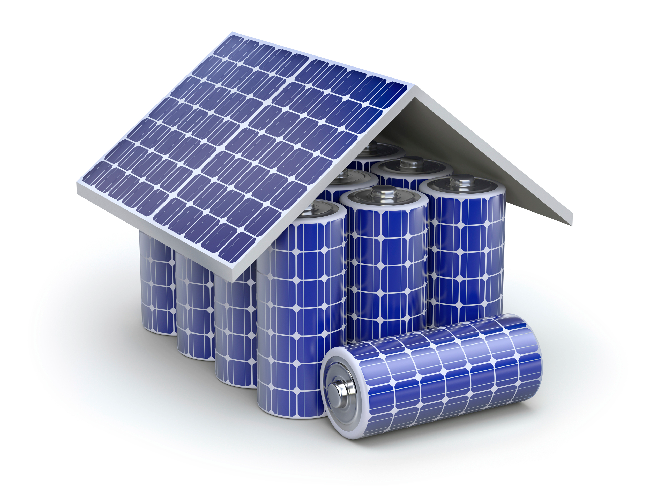What battery types are available for home energy storage applications?
Lead batteries
Lead-type batteries (particularly lead acid) have been in widespread commercial use longer than any other battery chemistry type on the market, and they are therefore the most affordable. There are three types of lead acid battery in common use: flooded, absorbent glass mat and gel. Lead-carbon batteries are also growing in popularity, thanks to their superior performance compared to lead acid.
Although they are not the best-performing battery chemistry available (e.g. they have a relatively short cycle life and cannot be discharged as deeply as other battery types without damaging their ability to hold a charge), the performance of lead batteries in real-life conditions is well understood and therefore predictable. There are numerous brands available, so they can be easily sourced. Furthermore, they are relatively safe to use there are well-established procedures for their disposal and recycling.
Who should consider lead acid batteries?
Households that want an energy storage system with relatively low upfront costs for a technology that is widely used and well-understood. Lead acid batteries may also be a good ‘entry level’ solution for those who are keen on home energy storage but don’t want to make a large investment yet.
Key specification ranges
- Recommended depth of discharge: 30-70% (depending on type & maker)
- Cycle life: 800-5,600 @ 30% DoD (depending on type)
- Design life: Up to 12 years
Lithium batteries
Lithium batteries are all the buzz in the energy storage space these days as the type of battery chemistry with the most promise to overtake lead acid as the standard for home energy storage applications. On the whole, lithium ion batteries are more robust than lead acid, tolerating deeper repeated discharges than lead acid without incurring the same wear and tear (mainly their ability to hold a charge). Lithium ion batteries are often described as ‘power batteries’ because they are good for discharging a lot of electricity quickly – a point where many other batteries fall down.
There are actually countless varieties of lithium ion chemistry compositions, but one of the most commonly used (and talked about) is lithium-iron phosphate (LiFePO4). One of the disadvantages of lithium ion batteries is the inherent combustibility of the electrolyte (and the issue of ‘thermal runaway’), although many companies have invested much time and capital into finding ways to improve safety.
Who should consider lithium-ion batteries?
Households who are after a battery storage system that will be able to provide relatively large amounts of power instantaneously (i.e. a battery that will ramp up quickly) and who are prepared to invest a bit more money in their batteries should consider a lithium ion battery bank. Lithium ion batteries will also go the distance in a way that lead acid will not, as they are capable of being repeatedly discharged to 80%+ of their rated kWh capacity without significantly damaging their ability to hold a charge.
Key specification ranges
- Recommended depth of discharge: up to 80% (depending on type)
- Cycle life: Up to 8,000 @ 80% DoD (depending on type) or 6,000 @ 90% DoD
- Design life: Up to 12 years
Aquion’s Aqueous Hybrid Ion (AHI) ‘saltwater’ batteries
Aquion’s battery chemistry falls into a category of its own, with no comparable product available anywhere. Non-combustible and relatively environmentally benign, the company’s AHI batteries are a potentially attractive option for those who want a safe and ‘clean’ option. They are designed to be discharge to their full capacity, and are good at functioning at ‘partial states of charge’, which means you don’t have to worry about damage if you fail to keep them ‘topped up’ (i.e. full charged) all the time. The major downsides of Aquion’s batteries are that a) they are large and heavy (nearly 1m tall and 118kg in weight) and b) their efficiency drops significantly when power is drawn quickly from them (it’s an ‘energy battery’).
Who should consider Aquion’s batteries?
Aquion’s batteries are a great fit for off-grid/stand-alone power systems, or as a ‘drop-in’ replacement for lead acid batteries. They are also probably the best product available for anyone who cares first and foremost about the environmental aspect of a solar+storage system.
Key specification ranges
- Recommended depth of discharge: up to 100%
- Cycle life: Up to 4,000 @ 100% DoD
- Design life: Up to 10 years (8-year warranty)
Flow batteries
Flow batteries are one of the newer technologies on the market. Unlike the batteries listed above, flow batteries contain moving parts which pump an electrolyte (various chemistry types) across a membrane. In contrast to lead and lithium batteries, in flow batteries the electrolyte itself is not what usually breaks down, bringing about the end of the battery’s life; instead, it’s the other components which will wear over time. Flow batteries are generally safe and non-corrosive, but can be extremely heavy, making them better suited for large-scale applications as opposed to home use.
Who should consider flow batteries?
If you’re keen on cutting-edge technologies, flow batteries will probably be of interest to you. They are also great for stand-alone systems.
Key specification ranges
- Recommended depth of discharge: up to 100%
- Cycle life: Usually unlimited – battery lifespan is limited by non-electrolyte components of the battery
- Design life: 10-12 years
